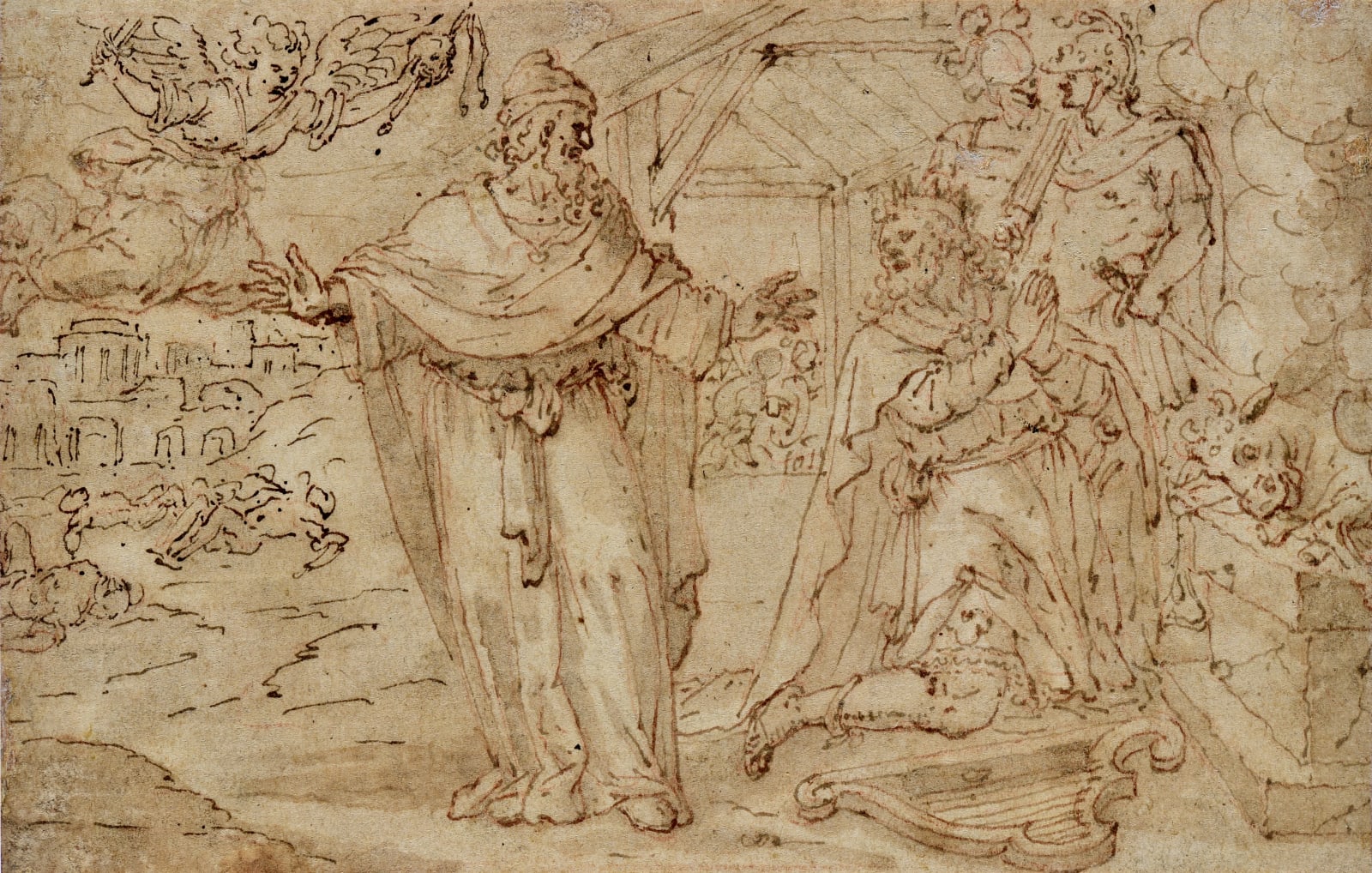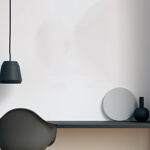Open a larger version of the following image in a popup:


Aegidius II Sadeler after Maerten de Vos, The Sacrifice of David.
Rijksmuseum, Amsterdam, inv. no. RP-P-H-H-1233.
Maerten de Vos (Antwerp 1532 - 1603)
The Sacrifice of David
pen and brown ink, brush and brown wash
100 x 158 mm
Maerten de Vos was born in Antwerp in 1532. His father, Pieter, was a painter from Leiden, who trained both Maerten and his brother, Pieter II. After his training (which...
Maerten de Vos was born in Antwerp in 1532. His father, Pieter, was a painter from Leiden, who trained both Maerten and his brother, Pieter II. After his training (which possibly included a stint in the workshop of Frans Floris), Maerten undertook a trip to Italy ca. 1552, spending time in Rome, Florence and Venice (possibly in the workshop of Tintoretto). In 1558 he returned to Antwerp, becoming a 'winemaster' (son of a master) in the Antwerp Guild of St Luke that same year. He was the Guild's dean in 1571/2. Around 1561 de Vos married Jeanne Le Boucq; the couple had five daughters and three sons, two of which - Daniel and Maerten II - also became painters.
When de Vos returned from Italy, his former master Frans Floris was still the leading history painter in Flanders, running a large workshop in Antwerp. This must have made it difficult for other masters to find commissions, but this changed when the Beeldenstorm (a wild bout of iconoclasm in the Low Countries in 1566) destroyed many of Floris' major artworks. It is said Floris never recovered from the shock of seeing his artworks destroyed, and he virtually stopped painting. This allowed a younger generation of artists to assert themselves, among whom de Vos became the most prominent.
De Vos produced monumental altarpieces for the Antwerp cathedral and other churches in the city; he also received many other important commissions, such as (along with Ambrosius Francken) the design of the decorations for the 1594 Joyous Entry into Antwerp of the newly appointed governor of the Southern Netherlands, Archduke Ernest of Austria. To meet the strong demand for his work, de Vos established a large workshop. He taught a large number of painters, including Hendrick de Clerck and Lodewijk Toeput.
In addition to altarpieces, de Vos produced landscapes, portraits, allegorical and mythological pieces, as well as designs for prints and book illustrations. He was a prolific 'inventor', whose designs were widely disseminated (in some cases as far as South America) through engravings by Rafael Sadeler, the Wierix brothers and many other engravers. De Vos also made designs for the Plantin press.
The present drawing is a very typical example of de Vos' graphic output. It depicts the Sacrifice of David, who can be seen to the right sacrificing an ox, his lyre lying before him. The biblical king is thereby hoping to stop the plague that the Angel of Death - who can be seen hovering above the scene - has brought upon his people. Aruna, the previous owner of the threshing floor and the oxen which David purchased from him to perfom his sacrifice, is looking on, while the landscape to the left is littered with plague victims.
The design was engraved by Aegidius II Sadeler and subsequently published by Johann I Sadeler (see ill.), probably ca. 1580 - 1596. The engraving is inscribed 'Martin de Vos figura', firmly establishing the authorship of the present drawing. Although usually prints are in reverse to the design, there are multiple examples of prints after drawings by de Vos that are done in the same direction as the drawing. Interestingly, these often seem to carry the inscription 'figuravit' instead of 'invenit', perhaps indicating that these drawings were not necessarily at first intended as designs for prints.




